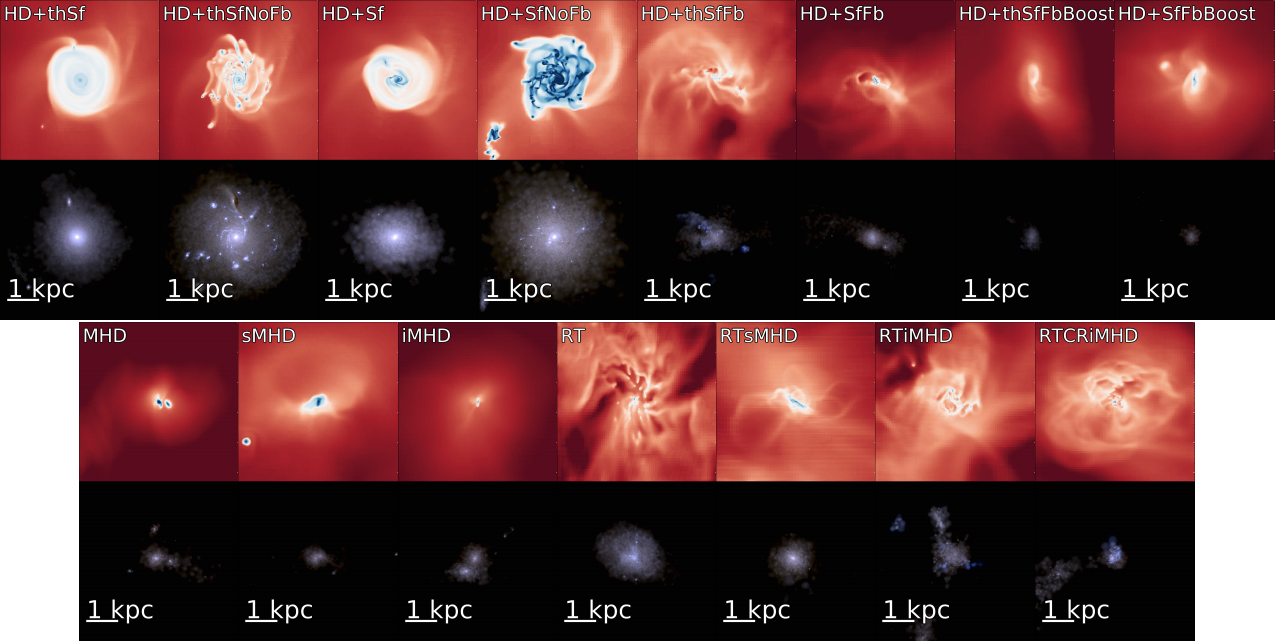Research highlight: Dwarf galaxy formation with cosmic rays, radiation and magnetic fields
Understanding star formation in dwarf galaxies has proven a persistent challenge for numerical simulations. While supernovae feedback is believed to be the main regulator of their gas conversion into stars, various properties of simulated galaxies differ from observations, such as their star formation histories as well as morphologies and kinematics. In order to construct more realistic simulated dwarf galaxies, accounting for additional baryonic physics has been advocated frequently (see also the research highlight above). In their absence, methods such as `calibrating’ stellar feedback have allowed simulations to reproduce the expected stellar masses at the cost of glossing over the physical fidelity.
Our group at the KICC is investigating the role of radiative transfer, cosmic rays magnetohydrodynamics in high resolution, cosmological simulations of dwarf galaxies. Accounting for each of these additional components has different effects on the evolution and properties of galaxies, as depicted in Figure 1. Specifically, we find it is crucial to incorporate self-consistently radiative transfer effects which lead to dwarf’s sizes and kinematics being in much better agreement with current observational constraints. Furthermore, the inclusion of cosmic rays results in very different outflow properties both in terms of their kinematics and thermodynamics, which provides some of the key predictions for the next generation observational facilities such as JWST.



